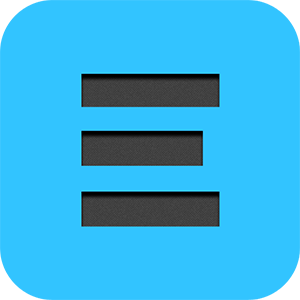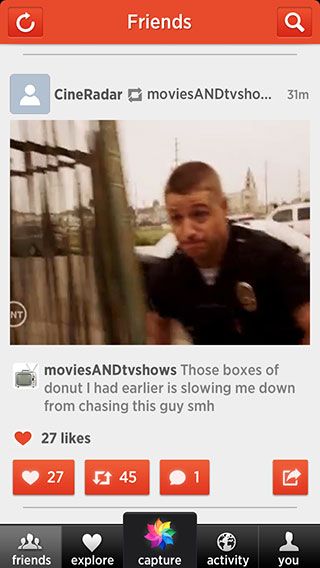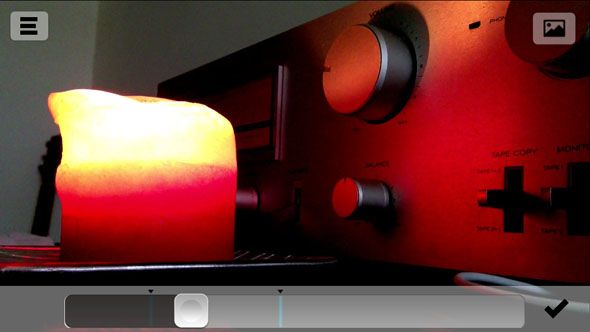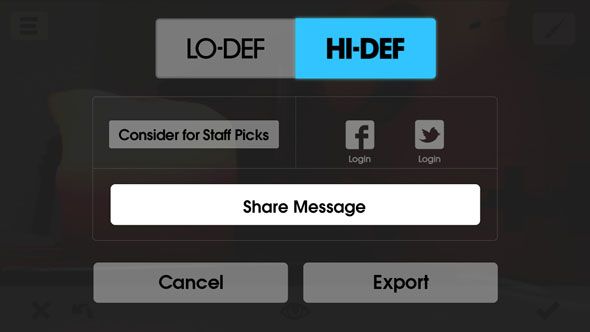Cinemagraphs blend selective animation and a static image to create a unique looping scene, popularised using Photoshop to adapt famous film scenes into contemplative GIFs a few years ago. Since the concept is so promising, app developers have pounced on the idea after the original release of Cinemagram.
There's now a new contender for the throne in the form of Echograph, an app which on first glance is remarkably similar. It's new, and according to the attention it has received it's noteworthy too, but can it topple Cinemagram, and how does it differ from other GIF authoring tools?
Looking Back
Cinemagram was a long-awaited app when it finally arrived on the App Store. Initial versions were quite basic, allowing an animation of a few seconds with little in the way of image stabilisation or additional features. That's changed a lot since I first reviewed Cinemagram back in May of last year. Despite nobody I follow on the service having used it for a good period of time (I'd not even opened the app for probably 6 months), Cinemagram has come a long way.
To start with it was a paid app back then - costing a small fee of $1.99 for the privilege of creating great-looking animations using the world around you. Now it's free, a side-effect of the many apps which attempted to bring cinemagraphs to the masses by undercutting the competition. It's highly unlikely apps like Instagram, Flipboard and the recently introduced Vine would have taken off quite in the same way with a nominal fee, which is probably what the developers were thinking.
Cinemagram has in fact added a bounty of new features, including Instagram-like filters, the ability to make shorts and control video speed. I can't help but feel the addition of shorts detracts from the point of the app, and waters down the concept somewhat. Vine is a lot more capable if that's what you want to do - and it's bound to get some new features in a few months (fingers crossed).
The more I play with Cinemagram, the less appeal I see in it. The Explore tab forces me to choose a hashtag, when I just want to see what's popular. My friends have stopped using it. The quality of the movies has remained the same - in short, the app seems to have added more features at the expense of its primary function, and so there exists a gap for a simple, high-quality cinemagraph creator - and that's where Echograph comes in.
Landscape Ahoy!
The first thing I noticed about Echograph was that it forced me into using the app in landscape mode only - despite locking my phone in portrait mode. Browsing, shooting and editing your cinemagraph is all done via landscape, with cinemagraphs taking on a traditional widescreen video format. There is no option to use portrait, unlike Cinemagram which now gives you a choice.
This does make more of a difference than you first think. You have slightly more frame to play with, and resulting creations look more cinematic. Second of all, you now have to hold your phone in landscape mode, which I found didn't do wonders for camera shake. These animations really do demand a steady hand, the more you move around the worse the resulting image looks as your animation warps back and forth. A tripod is recommended if you're really going to use this app for anything other than a bit of fun.
The extra space on-screen is great for applying a mask, and allows you to be more careful with the placement. The controls provided are also more pleasing, there's no Instagram-like filters available but the workflow seems smoother. First you outline your animation range, then you choose your static frame (i.e. what displays outside of the mask) and finally the mask. As you're applying the mask, your animation loops in the background, as you're choosing your range there is an onion-skin effect for lining up your start and end points - these are great features. Once you've finished you've got the option of saving a high or low quality cinemagraph and sharing it via the usual social channels.
Unfortunately despite the better workflow, a bigger frame and the high quality output you're still likely to get better results from Cinemagram, rather than Echograph. This is down to one reason - image stabilization. Cinemagram's image stabilization is unbeatable. It seems to smooth out some of the biggest jolts and most noticeable warps, whereas I'm not actually sure there's any stabilisation included in Echograph.
Good results in Echograph demand a tripod, or at the very least a stable surface and something to prop your iPhone on. If you were shooting cinemagraphs for use in a project then this would be expected, but mobile apps are meant to be accessible and fun, and the majority of people using this app will not be using a tripod.
There's also no way to browse all incoming submissions to Echograph, no favouriting, no following - though the staff picks section highlights some incredible talent. Is it bad I assumed that they were all shot on tripods?
Finally - here is a finished, exported GIF in low-resolution:
The difference between this and the version seen in the app and via Echograph's website is considerably different. When you share via Twitter, the app posts this:
You can view the "proper" low-res Echograph cinemagraph here.
Conclusion
They're both free apps, and both are worth the effort of downloading. Echograph has the foundations for what could be the evolution of the artform. Higher quality, larger frames, better controls, smoother workflow - with one snag: poor or no image stabilisation. If you value high quality then you can do no better than Echograph, just don't forget your tripod and a mount.
If you're messing around and value the ability to colour-grade, follow friends and don't have steady hands then stick with Cinemagram for now.
What do you think of Echograph? Prefer Cinemagram? Let us know what you think, below.






